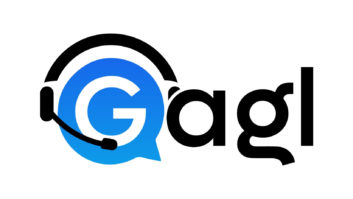
The Merlin Plus (top) shows a full six channels streaming in. SAN DIEGO — I always like trying new things. While at the NAB Show in Las Vegas, I stopped by the Tieline booth to say hello. That hello turned into a “you must see this new product” speech and then a quick discussion of what it was and why I had to see it.
I knew the Merlin codec was available, but I also knew that an improved version was in the works. I liked what I saw, but with budgets the way they are, I took note and filed that away in the recesses of my mind, hoping to come back to it for further research at a better time.
Two things stuck in my head after that meeting: (1) Up to six simultaneous IP connections and (2) the use of the Opus algorithm.
Well, recently I received a call asking if I would like to take the Merlin Plus codec for a spin. I did not hesitate to sign the loaner agreement.
SIX CHANNELS
I should have asked why a company would make a box that would accept six simultaneous streams, but for me it was a challenge that needed to be tested. If a product is advertised to do something, I want to know that it will. After receiving the equipment — one Merlin Plus and one Merlin codec (for Opus testing) — I quickly set up the bench for testing.
My test was going to be running six connections using digital I/O into my SAS 32KD routing system, so with the excitement of something new to play with, I started preparing the connections. The I/O expansion port is a DB-25 connection, so I wired one up for my tests.
At first I created a typical connection using the Merlin. I also made connections with my Tieline Commander G3 TLR300 rack codecs. The standard Tieline Music Plus algorithms worked as advertised.
Initially, only single connections were made. I did this to make sure things worked “right out of the box.” As I am familiar with Tieline codecs, I had no issues navigating the screen and made these connections.
As a pretest for the Opus algorithm, I configured the Merlin codec for such a connection and tested that. Being happy that all systems are a go, it came time to figure out how to make six connections happen.
I downloaded the manual and started to peruse it because I had found that creating the configuration that I wanted was not fully intuitive. But before I could finish I decided to leave work and go home to think about it. After a beer and another perusal of the manual, the light bulb in my head lit and I was ready for the next attempt.
The next morning, I did not hesitate to create the configuration and see if this thing could actually do six connections. It was also a test of our network infrastructure, as we have three codecs that share a T1 circuit to our ISP. In addition, we have other traffic on that connection, though minimal, that could cause issue.
I connected the following to the Merlin Plus:
1. TLR300 on the network
2. TLR300 on the network
3. Merlin on 4G LTE
4. Report-IT app on Android phone and 4G LTE
5. Report-IT app running on Android tablet on a Wi-Fi hotspot connect to 4G LTE
6. An iPhone with the Report-IT app on 4G LTE.
All connections were at various data rates from 33.6 kbps to 48 kbps, and I let these connections ride for two hours. Success! I had six connections at the same time.
Next, my curiosity turned to the Opus algorithm. It is still in the testing stage, but is available on the Merlin Plus and Merlin codecs. The claim of Opus is quality with low bitrate and low latency. I had to test this one over the 4G LTE network. I selected the appropriate configuration, or program, and made the connection. As with any wireless connection, I took a couple minutes to settle down. I looked at the connection details and saw the buffer settled down to 60 ms, and that was a cellular data connection. When broadcasting normally, we see anywhere between 150 ms to 250 ms buffer, due to the network.
I wanted to test the Opus on a live broadcast but, alas, the station cancelled the remote. A quick frequency response sweep while I was connected found a very respectable 50 Hz–15 kHz response, definitely well suited for voice broadcasts.
The programming of the Merlin Plus codec is done via the Toolbox GUI, which is Java-based. Poking around in the program, I was able to configure the 2X mono connections with ease. Where I wanted to go with the 6X connections required more understanding of the codec and user management tools via Tieserver. Once I had this down, creating the larger configuration program was simple.
If the codec is hiding behind a firewall, an understanding of the IP port structure is a must as each individual audio stream has a dedicated port. In my tests the session streams used the same port, so the box is capable of managing the individual sessions within the DSP.
It should be noted that Opus is currently not a choice when configured for six connections. I have been informed that this is a project in progress, so I suspect it will be introduced soon.
I can think of many reasons why our music-only stations would need six streams. If I can think up that many for the music stations, just think of the possibilities for a sports or news facility that I could dream up.
For information, contact Tieline USA in Indiana at (317) 845-8000 or visitwww.tieline.com.












